Midway Geyser Basin, Rabbit Creek Hot Springs
Page 1 2
If you follow Rabbit Creek east of the highway approximately one mile uphill to its source, you cross an area of many colorful hot springs, paint pots, and a few geysers. Since Rabbit Creek drainage is not in focus of public interest, only a few features carry names. Therefore, I designated the others according to the RCN database. Please note: Even if the area is close to the highway, it is a backcountry setting and lacking safeguarding equipment such as designated trails or warning signs. Moreover, it is known to be one of the more dangerous spots due to overhanging rims of hot springs and deceiving crust. You should only enter the area if you are familiar with safety rules and regulations for backcountry thermal areas. And yes, this is also seasonally closed bear management area. (Update: The following pictures were made on hikes in 2013 and in 2015. The Rabbit Creek Drainage is one of the backcountry thermal areas which have been closed to public entry by the NPS since 2016.)
In fact, Rabbit Creek is solely a thermal water runoff and it looks accordingly. Besides White Creek at Lower Geyser Basin it is one of the longest pure hot spring runoffs in Yellowstone. The follwing pictures show typical impressions of Rabbit Creek on the way upstream.
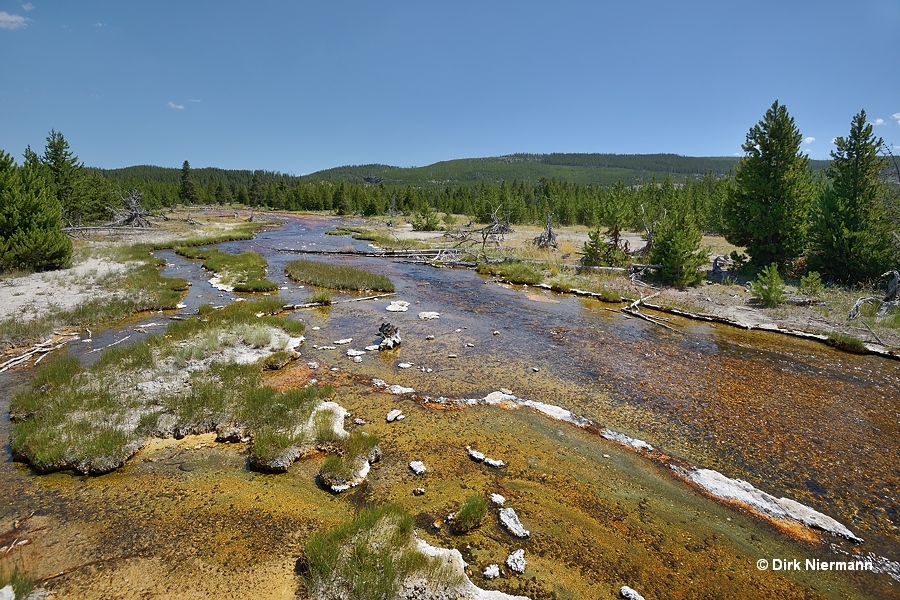
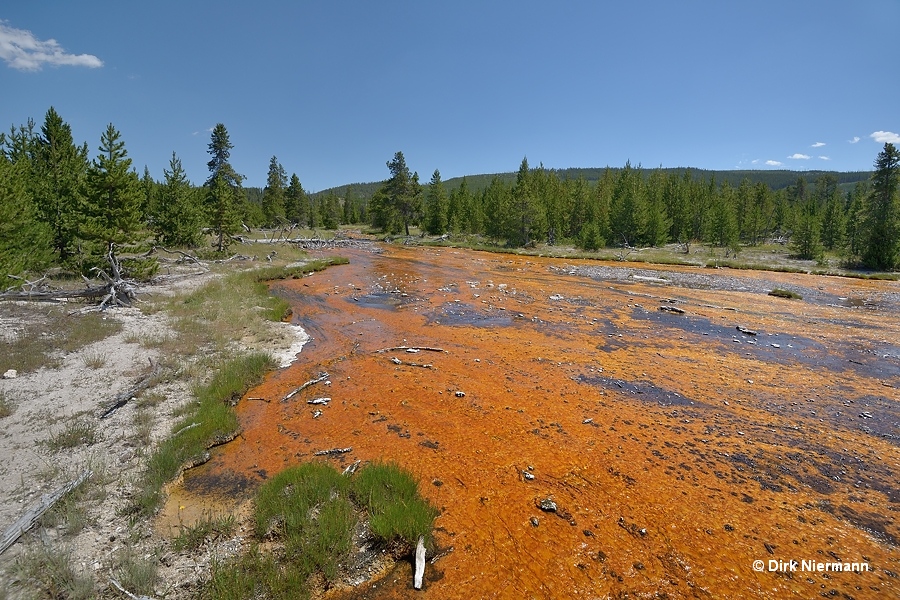
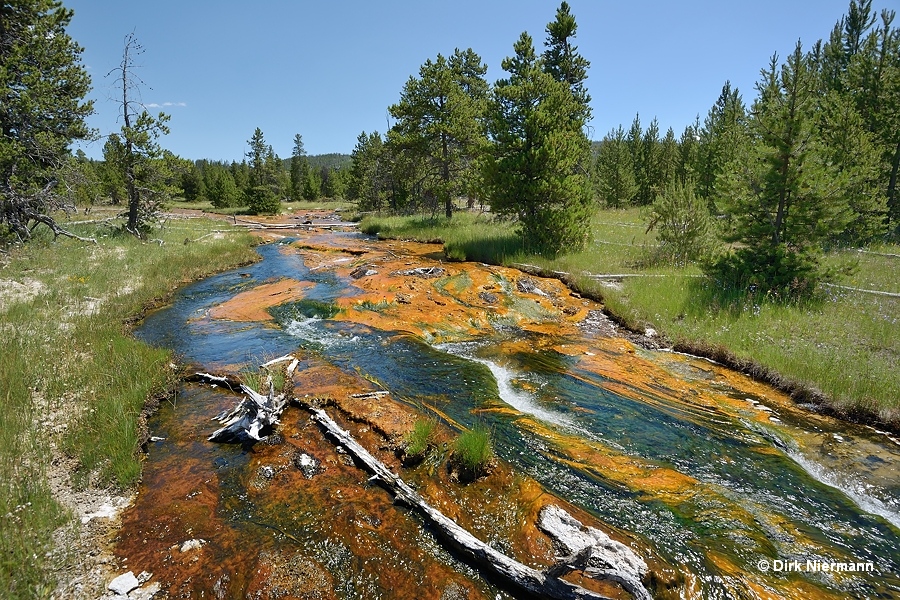
Along the northern bank of Rabbit Creek a number of hot springs are to be found. A small collection of the more striking ones is presented in the next pictures in an upstream sequence.
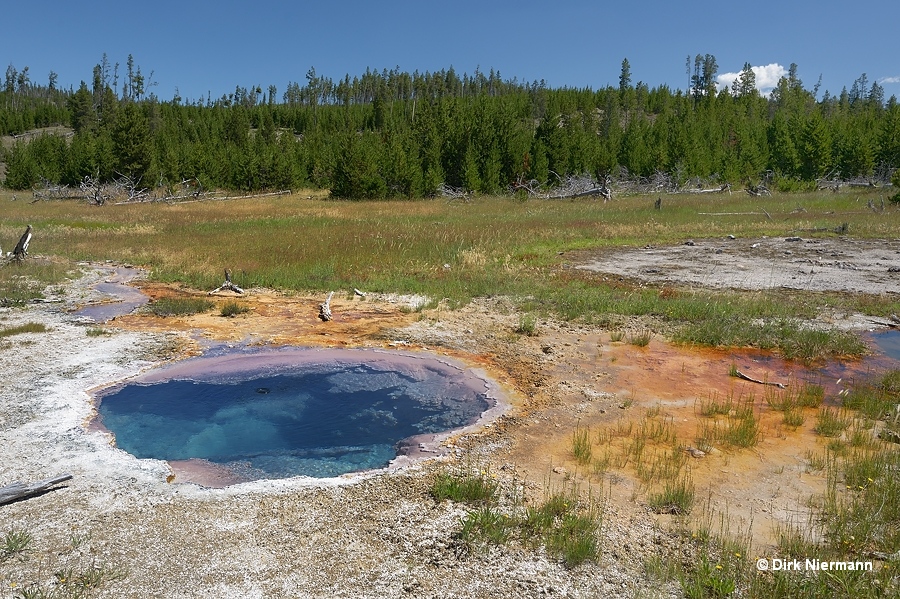
Some of the hotter springs at Rabbit Creek show a characteristic and appealing color pattern. The dusty pink of the shallow water zone shades into a violet-blue before merging with a dark sapphire blue in the springs center.
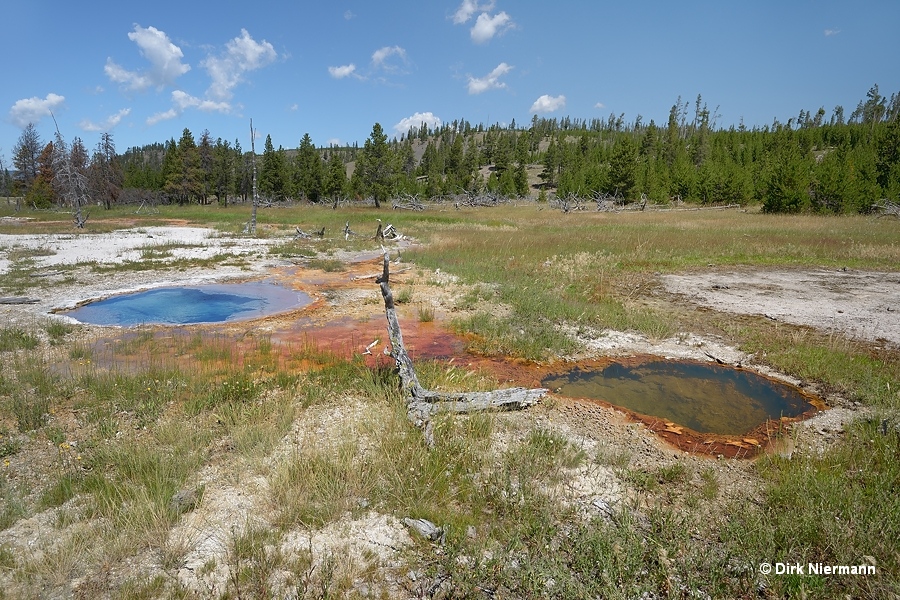
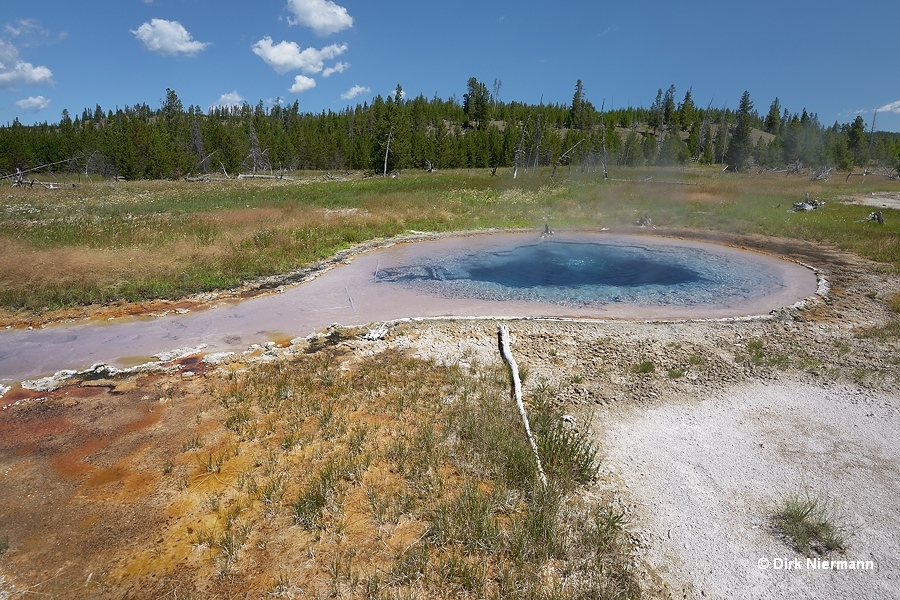
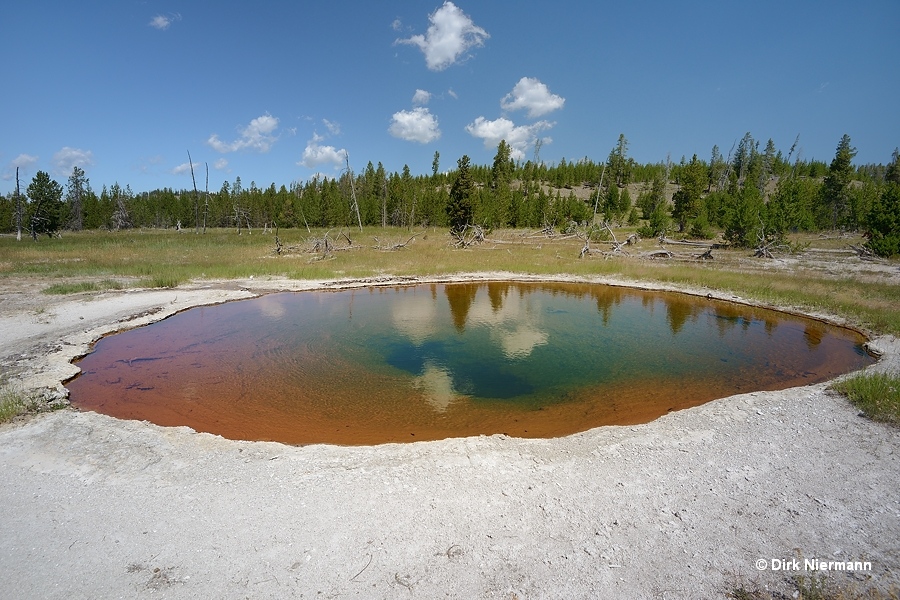
The northern branch of Rabbit Creek originates from a large, shining blue pool, named Olympic Pool (formerly called Rabbit Creek Source Pool). It is one of the largest hot springs in Yellowstone.
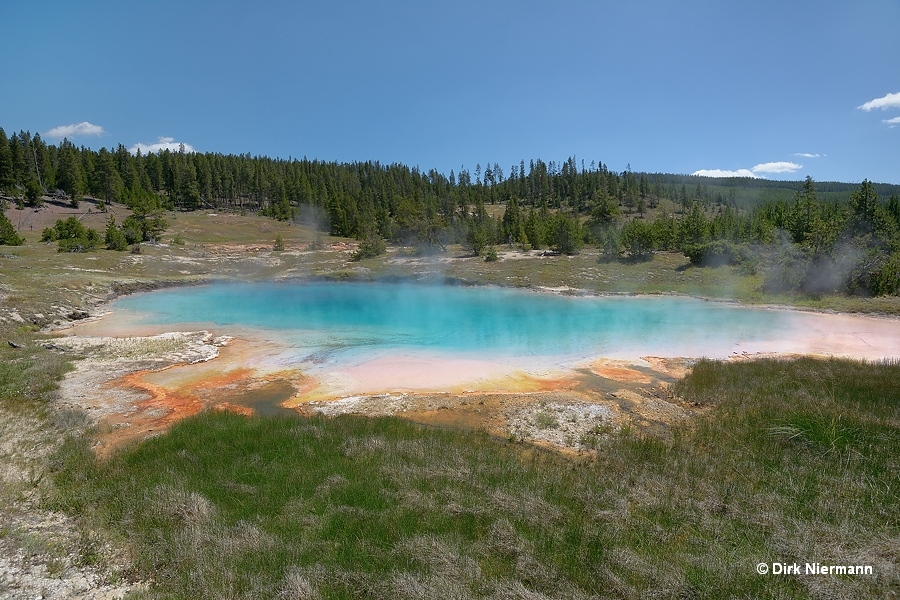
In particular its runoff seems to offer unique living conditions for rare pink colored mats of filamentous bacteria, possibly Thermocrinis ruber. This hyperthermophile uses hydrogen, sulfur, or thiosulfate as energy sources and was discovered by Robert Huber et al. from a sample collected in Octopus Spring of nearby White Creek Group in October 1994. Thermocrinis ruber thrives at temperatures up to 89 °C (192 °F), which is quite close to the boiling point of water at this altitude.
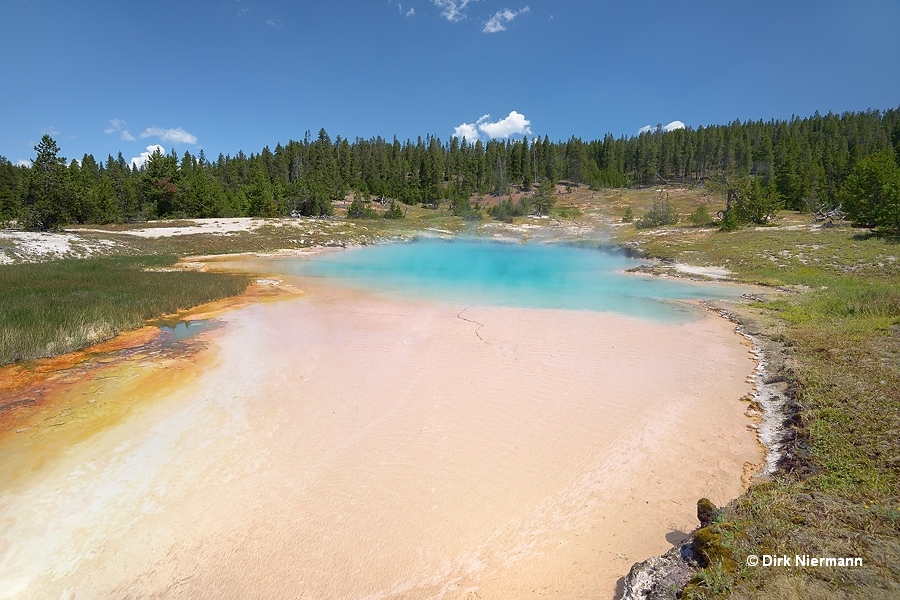
Northwest of Olympic Pool the hot spring MNN016 attracts attention because of frequent superheated boiling. Springs like this are sometimes classified as "bubble-shower springs".
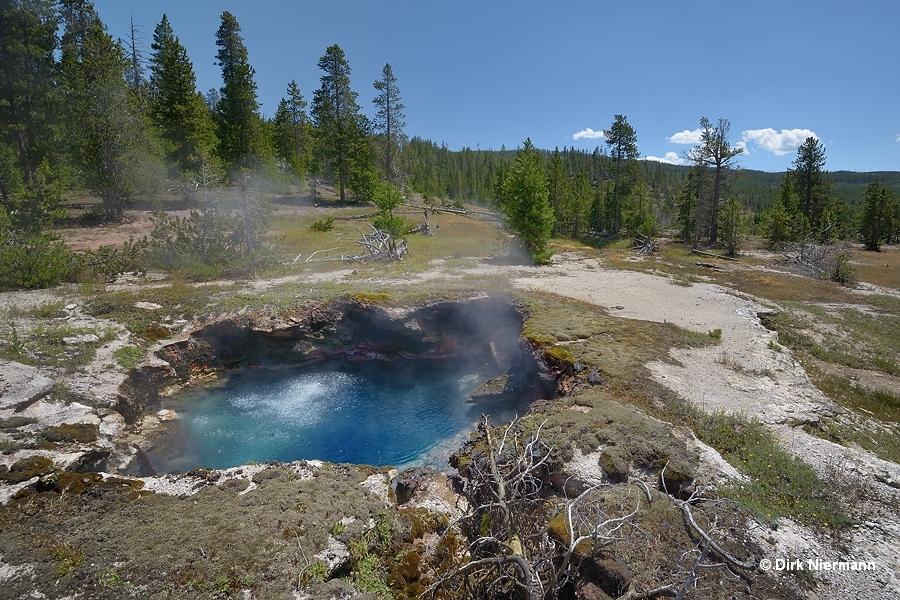
MNN016 lies within one of the sections at Rabbit Creek, which are trappy due to fragile crust. This dry vent next to it shows that seemingly solid ground may be only a thin ledge above a reservoir of hot water.
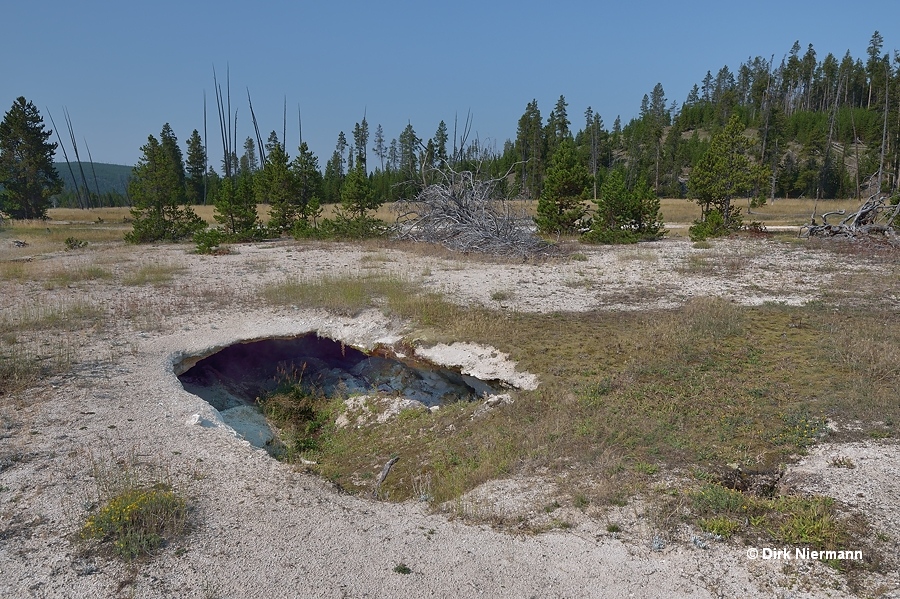
Farther northwest the three differently colored pools of MNN028 present an extraordinary sight, which seems to be special to the Rabbit Creek drainage (see Three Vent Hot Spring in Rabbit Creek Group).
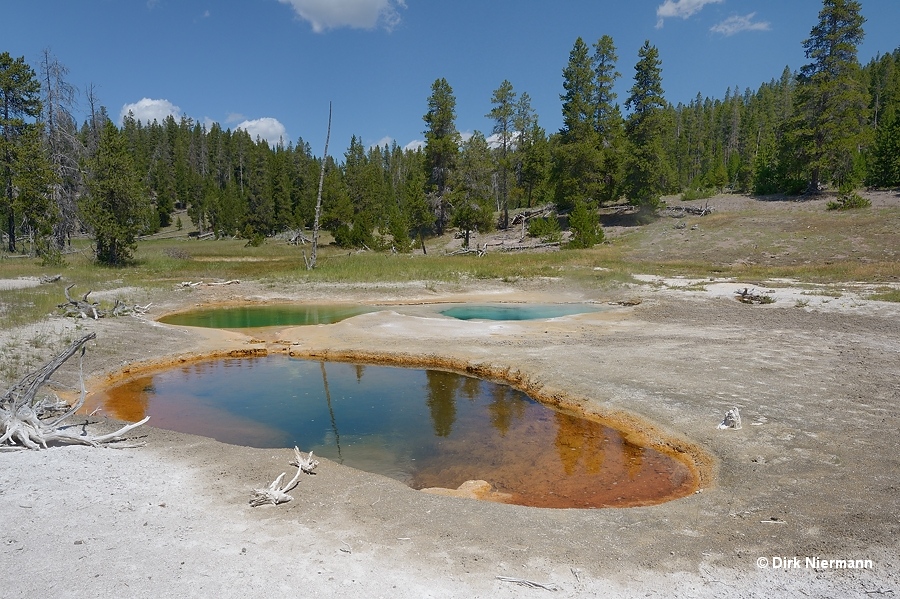
The color effect here is caused by the fact that the vent is located inside the hot blue pool, whose water flows into the adjacent pool where it cools down and gives rise to a green color. This happens again when water from the green pool discharges into the orange pool, which is the coldest of the three. The setting is a thermal cascade and a color cascade rolled into one.
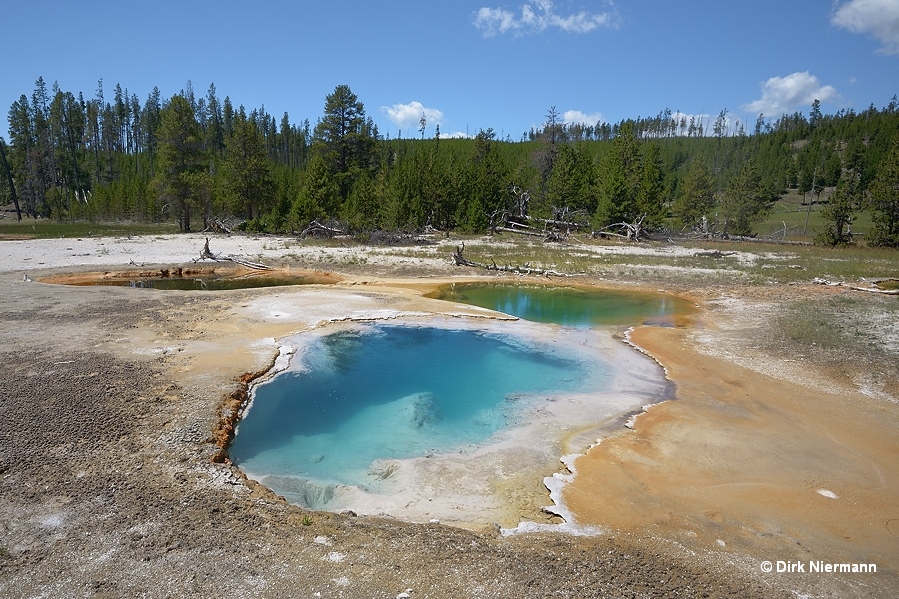
Adjacent to MNN028 lies the hot spring MNN027. With its velvety, egg yolk yellow bacterial lining it is a miniature version of Emerald Pool in the Black Sand Group.
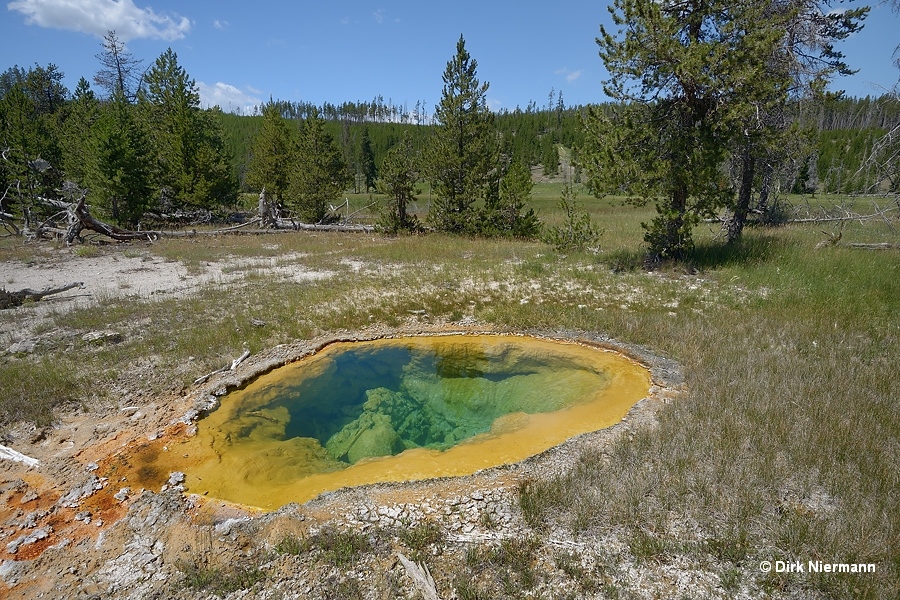
MNN029 is the last pool along the northern boundary of the Rabbit Creek Hot Springs. Like MNN028 its bottom is completely covered by thermophiles, but their darker green-orange-brown hues indicate lower water temperatures.
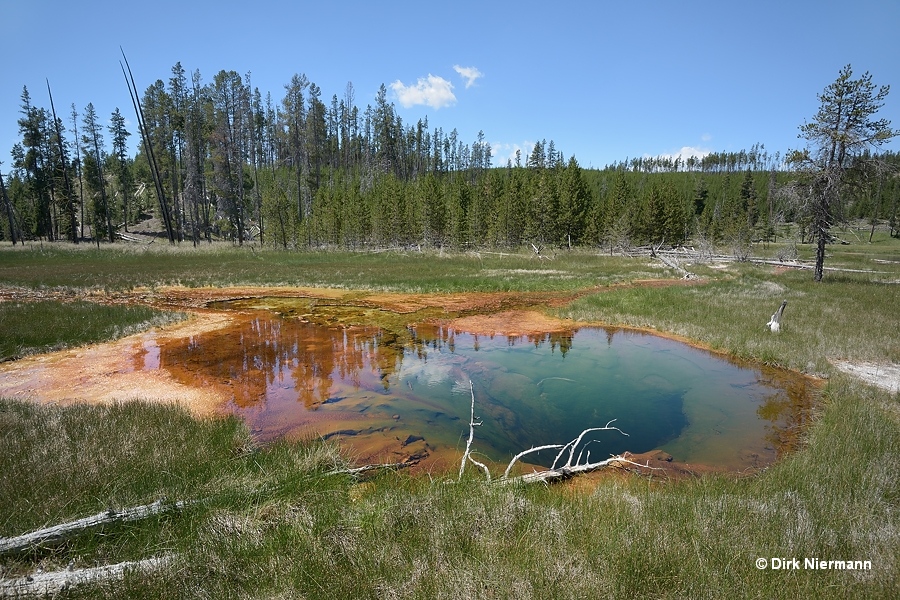
Page 1 2